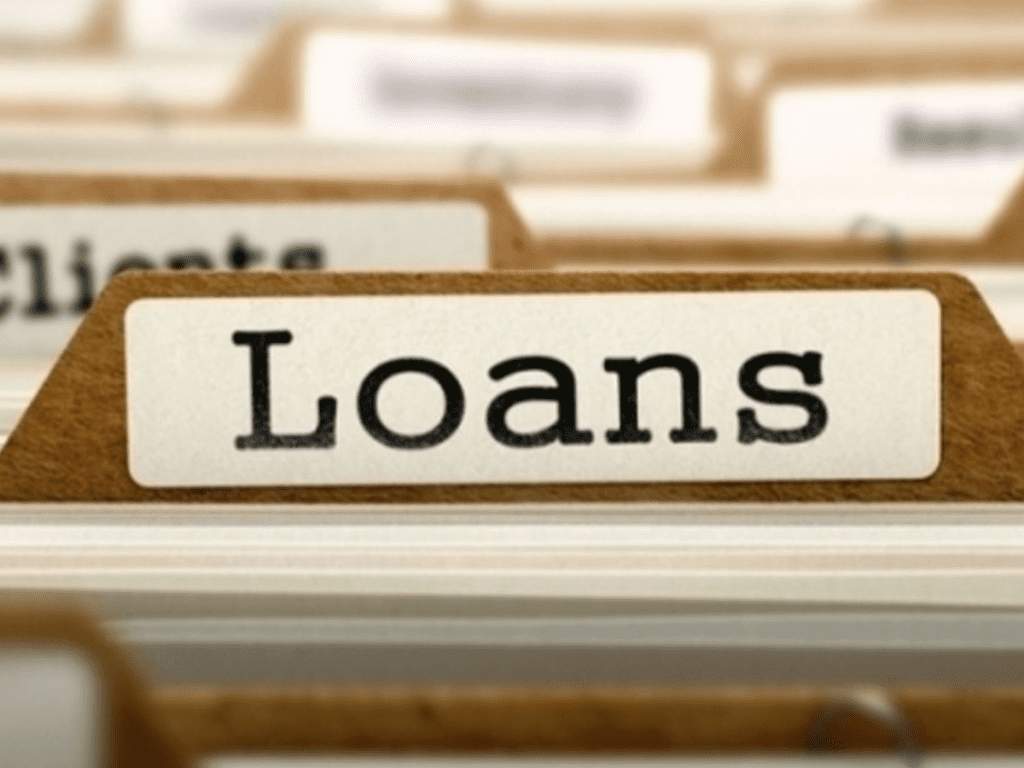Introduction
When it comes to financing big purchases or managing personal or business finances, loans play a crucial role. Whether you’re looking to buy a home, fund an education, or expand your business, understanding the types of loans available is essential to make informed decisions. Loans come in various shapes and sizes, each with its terms, conditions, and advantages. By understanding these different types of loans, borrowers can better navigate their financial choices. This comprehensive guide will take you through the most common types of loans, explaining their features, benefits, and key considerations.
1. Personal Loans
Personal loans are unsecured loans that individuals can use for various purposes, from consolidating debt to funding medical expenses or home renovations. They typically do not require collateral, meaning borrowers do not need to pledge any asset to secure the loan. Instead, lenders rely on the borrower’s creditworthiness to determine approval and interest rates.
Key Features:
- Loan Amount: Personal loan amounts can range from a few thousand to tens of thousands of dollars, depending on the lender and the borrower’s credit profile.
- Interest Rates: Rates can be fixed or variable and depend largely on the borrower’s credit score. A higher credit score usually results in lower rates.
- Repayment Terms: Personal loans typically have repayment terms ranging from two to five years. The term length influences the monthly payment and the overall interest paid on the loan.
Advantages:
- Flexibility in usage: Personal loans can be used for almost anything, making them highly versatile.
- No collateral required: As an unsecured loan, there is no risk of losing assets if you default.
Considerations:
- Interest rates can be high for individuals with poor credit.
- Fixed loan payments may be higher compared to other types of loans.
2. Auto Loans
Auto loans are specifically designed to help people finance the purchase of a vehicle, whether it’s new or used. These loans are typically secured, meaning the vehicle being purchased serves as collateral. If the borrower fails to make the payments, the lender has the right to repossess the vehicle.
Key Features:
- Loan Amount: The loan amount typically covers the price of the vehicle minus the down payment.
- Interest Rates: Rates are usually competitive, with terms varying based on creditworthiness. A higher credit score often translates into a lower interest rate.
- Repayment Terms: Auto loan repayment terms usually range from three to seven years. Borrowers with a larger down payment may have more favorable terms.
Advantages:
- Secured by the vehicle, which can result in better rates for the borrower.
- Flexible loan amounts based on the price of the car.
Considerations:
- If you miss payments, your vehicle can be repossessed.
- Like other secured loans, the value of the collateral may impact the loan’s terms.
3. Mortgage Loans
A mortgage loan is used to purchase real estate, such as a home, and is typically repaid over a long period, often 15 or 30 years. This type of loan is secured by the property being financed. There are various types of mortgage loans, including fixed-rate mortgages, adjustable-rate mortgages (ARMs), and government-backed loans like FHA or VA loans.
Key Features:
- Loan Amount: Mortgage loans are generally large amounts, often covering the majority of the home’s purchase price.
- Interest Rates: Mortgages can have either fixed or adjustable rates. Fixed-rate mortgages maintain the same interest rate for the entire loan term, while ARMs have rates that may change over time.
- Repayment Terms: Mortgages usually have longer repayment terms than other loans, ranging from 15 to 30 years.
Advantages:
- Mortgage interest rates are often lower than those of unsecured loans.
- Long repayment terms allow for more manageable monthly payments.
Considerations:
- Defaulting on a mortgage loan can lead to foreclosure, where the lender can seize the home.
- Securing a mortgage may involve significant paperwork and can be a lengthy process.
4. Student Loans
Student loans are designed to help individuals pay for education-related expenses, such as tuition, books, and living costs. These loans are available through the government or private lenders, and repayment typically begins after graduation, with extended repayment terms to ease the financial burden on students.
Key Features:
- Loan Amount: The loan amount is determined by the school’s cost of attendance and the borrower’s financial need.
- Interest Rates: Government-backed student loans tend to have lower fixed rates, while private loans may have variable rates.
- Repayment Terms: Federal student loans offer income-driven repayment plans, while private loans may offer more traditional fixed repayment schedules.
Advantages:
- Lower interest rates on federal loans compared to private loans.
- Deferred payments during school and a grace period after graduation.
Considerations:
- Student loans can take decades to repay, especially if interest accrues during the deferment period.
- Defaulting on student loans can have severe financial consequences, including wage garnishment.
5. Credit Card Loans
Credit card loans, or credit lines, allow individuals to borrow money on a revolving basis, meaning they can borrow up to a set limit and repay it in installments or full. While credit cards are technically revolving credit rather than traditional loans, they function similarly in many ways.
Key Features:
- Loan Amount: The credit limit is determined by the lender and depends on the borrower’s credit history and financial profile.
- Interest Rates: Credit card loans tend to have high-interest rates, especially for those with lower credit scores. However, some cards offer introductory 0% interest rates for a limited time.
- Repayment Terms: Borrowers are required to make at least the minimum payment each month, but they can carry a balance from month to month.
Advantages:
- Flexible borrowing: Borrowers can use credit cards for a wide range of purchases, from daily expenses to larger purchases.
- Rewards programs: Many credit cards offer perks like cashback, points, or miles.
Considerations:
- High-interest rates can make credit card debt expensive if balances are carried over time.
- Missing payments can result in late fees and damage to credit scores.
6. Home Equity Loans and HELOCs
Home equity loans and Home Equity Lines of Credit (HELOCs) allow homeowners to borrow against the equity they have built in their homes. While home equity loans provide a lump sum, HELOCs offer a revolving credit line.
Key Features:
- Loan Amount: Home equity loans typically offer up to 85% of the home’s equity, while HELOCs may offer more flexible borrowing limits.
- Interest Rates: Home equity loans typically have fixed rates, while HELOCs often have variable rates.
- Repayment Terms: Home equity loans typically require fixed monthly payments, while HELOCs offer more flexible repayment terms, with a draw period followed by a repayment period.
Advantages:
- Home equity loans and HELOCs tend to have lower interest rates than other unsecured loans.
- The loan is secured by the home, which may lead to better terms.
Considerations:
- The home is at risk if the borrower fails to make payments.
- Borrowers need to have significant equity in their home to qualify.
7. Payday Loans
Payday loans are short-term, high-interest loans typically used by individuals who need quick access to cash before their next paycheck. These loans are usually small and are due in full on the borrower’s next payday.
Key Features:
- Loan Amount: Payday loans tend to be small, usually ranging from $100 to $1,000.
- Interest Rates: Interest rates on payday loans are exceptionally high, with APRs often exceeding 400%.
- Repayment Terms: These loans must be repaid in full within a short period, typically two weeks.
Advantages:
- Quick access to cash in an emergency.
- Minimal paperwork or credit checks.
Considerations:
- Extremely high-interest rates, which can lead to debt traps.
- Short repayment terms may make it difficult for borrowers to repay in time.
8. Business Loans
Business loans are used by entrepreneurs and companies to finance operations, expansions, or capital needs. These loans come in several forms, including term loans, lines of credit, and SBA (Small Business Administration) loans.
Key Features:
- Loan Amount: Business loans can range from a few thousand to millions of dollars, depending on the lender and the business’s needs.
- Interest Rates: Business loan rates vary depending on the type of loan and the borrower’s creditworthiness.
- Repayment Terms: Business loans typically come with shorter repayment terms compared to mortgages, and the terms depend on the nature of the loan.
Advantages:
- Business loans can provide the necessary capital for expansion and operational costs.
- The ability to access significant funding can help scale operations.
Considerations:
- Business loans may require collateral, putting assets at risk.
- Interest rates can vary significantly based on the type of loan and the business’s financial health.
Conclusion
Loans are essential financial tools that help individuals and businesses achieve their goals, from buying homes to funding education or expanding operations. By understanding the different types of loans available, borrowers can make better decisions, selecting the right loan that fits their needs and financial situation. Always be mindful of the terms, interest rates, and repayment plans, and be sure to borrow responsibly to avoid the pitfalls of debt accumulation. Whether it’s a personal loan, mortgage, student loan, or business loan, understanding the nuances of each option can pave the way for better financial management and success.

